What happens when a smashing hit restaurant’s star chef moves on? Transitions can be tricky but not impossible to achieve, say insiders

Chef Varun Totlani, who was part of Masque’s founding team, has recently taken over as the head chef of the restaurant. Just last week, the restaurant began offering the first menu with him helming the kitchen. Founder Aditi Dugar calls it “an explosion of flavours”. Pics/Ashish Raje
They say, if you must leave, leave when at the top. Chef Prateek Sadhu seems to have done just that when he announced his departure in March from Masque, an ingredients-driven restaurant housed in the industrial mill area of Mahalaxmi offering a multi-course tasting menu, that he set up with entrepreneur Aditi Dugar in 2016.
ADVERTISEMENT
It hasn’t taken long for Masque to become a talking point, and Sadhu, the poster boy of foraged Indian produce. Last year, it marked five years of its journey with a multi-city tour and in March this year, it ranked at #21 on the Asia’s 50 Best Restaurants list.
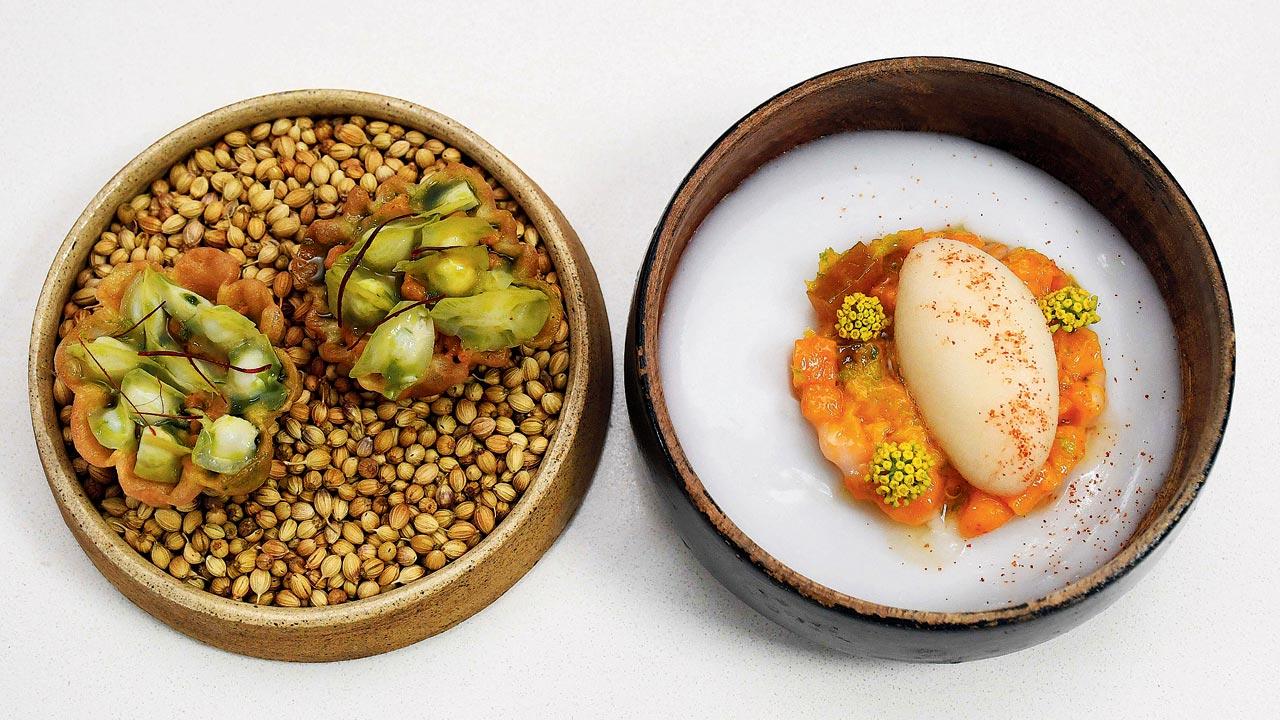 Murungakkai Marrow, Chef Totlani’s take on Tamil Nadu’s murungakkai kuzhambu and (left) his dessert featuring aam papad made with alphonso, sorbet made from Valloné’s dessert wine Vin de Passerillage from Nashik and ambemohar rice cream
Murungakkai Marrow, Chef Totlani’s take on Tamil Nadu’s murungakkai kuzhambu and (left) his dessert featuring aam papad made with alphonso, sorbet made from Valloné’s dessert wine Vin de Passerillage from Nashik and ambemohar rice cream
Sadhu announced that he wished to pursue independent endeavours, and was replaced by Chef Varun Totlani, who was part of Masque’s founding team. For Dugar, it was a no-brainer. Founder of Sage & Saffron and Masque, she says that Totlani has “a deep understanding of the restaurant on the whole and has played an integral role in our growth. He has moved from strength to strength, and has trained both in the kitchen as well as in the front house, which is important in gaining a well-rounded view of how a space works. Our first menu with him helming the kitchen has just launched, and it’s really an explosion of flavours.”
Some of the dishes that the menu boasts include a salad made with pickled cactus (nagfani), cucumber and candy cane beetroot, paired with a broth of green apple and coriander. Then there is the murungakkai marrow, which is his take on Tamil Nadu’s murungakkai kuzhambu where the drumstick marrow, marinated in traditional flavours, is set within a leek cream tart and topped with seeds seasoned with curry leaf. His dessert presents a summer in Maharashtra and features aam papad made with alphonso, sorbet made from Valloné’s dessert wine Vin de Passerillage from Nashik and ambemohar rice cream. He agrees that he had big shoes to fill. “I was a little nervous ahead of the menu launch, wondering how people would react to it,” he tells mid-day, adding with relief, “the response has been overwhelming.”
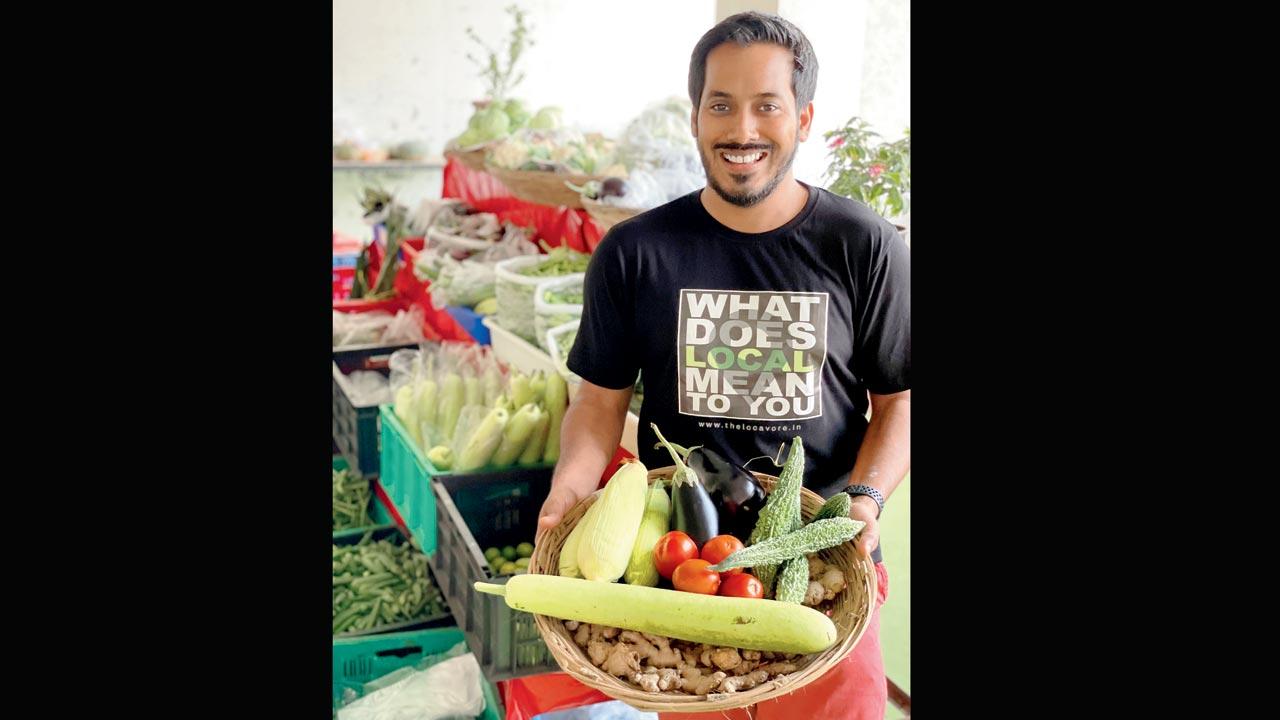 Chef Thomas Zacharias
Chef Thomas Zacharias
He admits that he misses having Sadhu around. “Besides that, I don’t think a lot has changed.”
Totlani’s close collaboration with the former head chef has made the transition easier; he looks back at his mentor as someone from whom he learnt how to look at food, and treat guests. “When he decided to move on, he didn’t offer fancy stories. He was honest about his decision [to me] and has been there as a support system as well as a friend. We still chat and discuss things beyond our work too. I did discuss the menu with him and whenever he is back in town, he is going to come over and give me his feedback.”
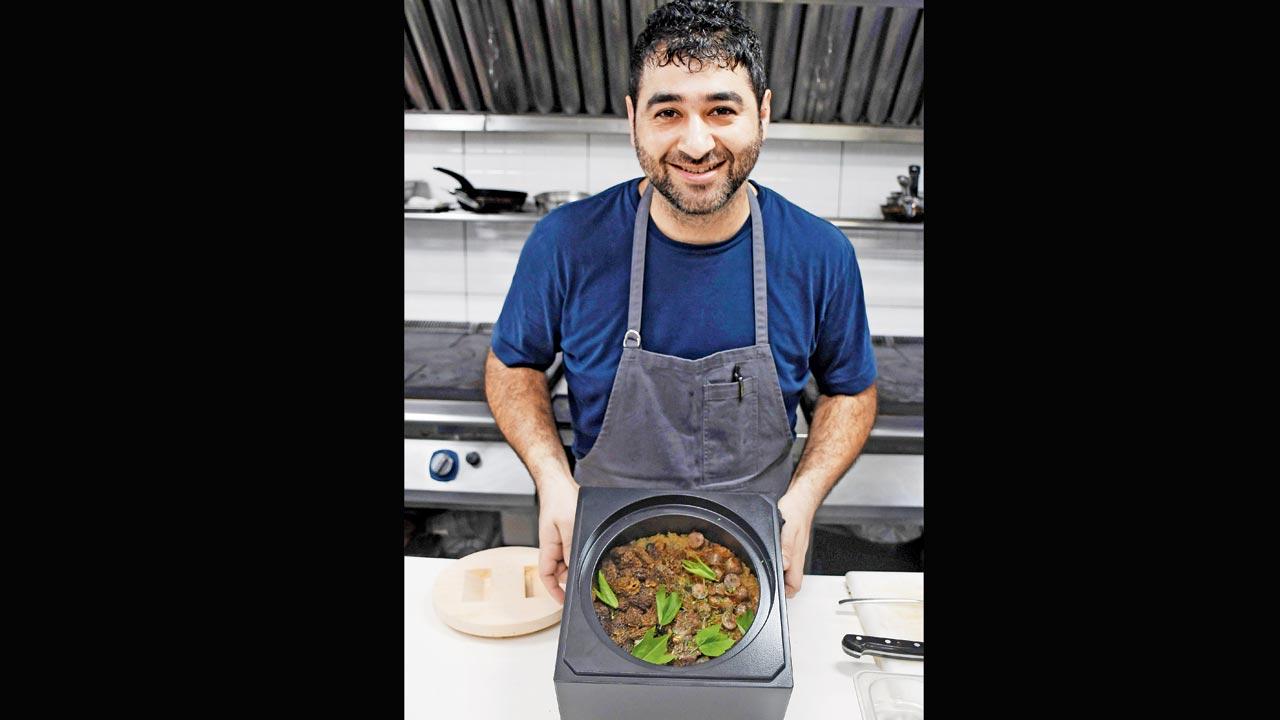 Chef Prateek Sadhu, the poster boy of foraged Indian produce, announced his departure as chef-partner of Masque, an ingredients-driven restaurant in Mahalaxmi
Chef Prateek Sadhu, the poster boy of foraged Indian produce, announced his departure as chef-partner of Masque, an ingredients-driven restaurant in Mahalaxmi
While it is too early to say how this transition will go, the perfect case study, say industry experts, is The Bombay Canteen (TBC).
Founded by late New York-based Indian chef Floyd Cardoz, and entrepreneur Sameer Seth and Yash Bhanage, the Lower Parel restobar that seeks inspiration from local food and seasonal ingredients, was long associated with chef-partner Thomas Zacharias, the affable kitchen star who knew his seasonal produce as well as he did his social media hacks.
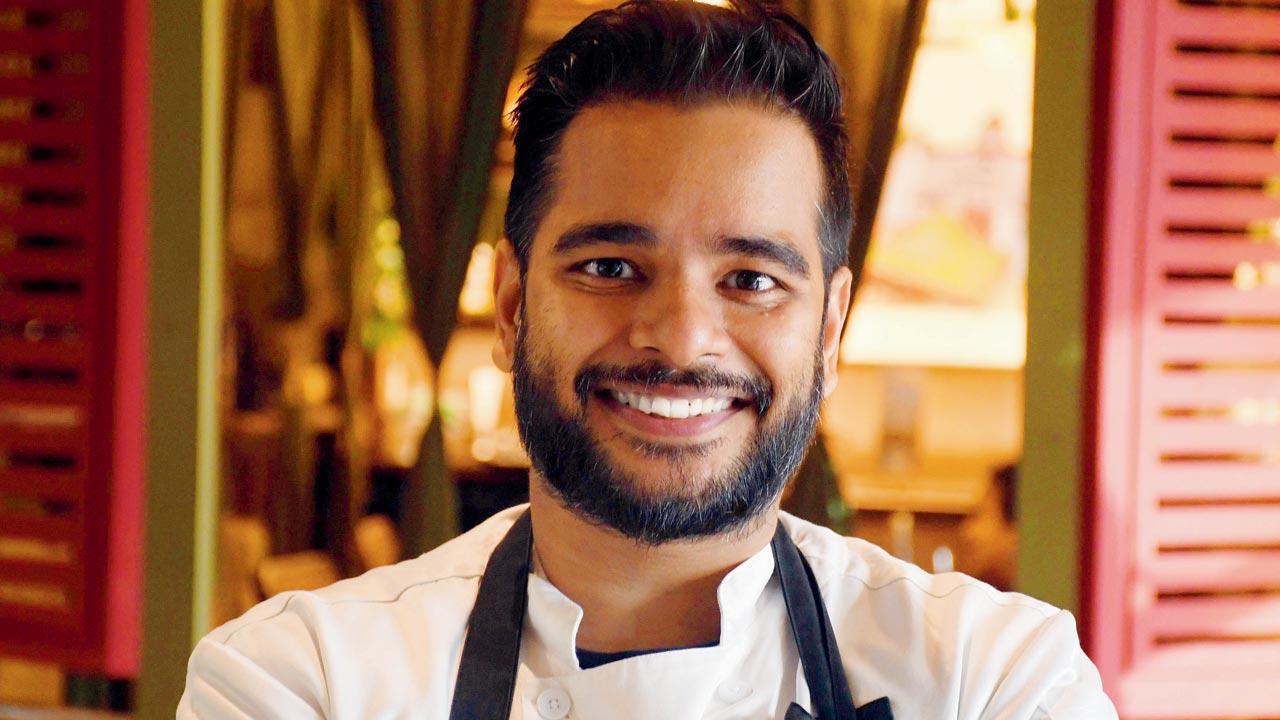 Food writers have only words of praises for Chef Hussain Shahzad, who they say has brought his own unique style to the soul of The Bombay Canteen menu
Food writers have only words of praises for Chef Hussain Shahzad, who they say has brought his own unique style to the soul of The Bombay Canteen menu
“The Hunger Inc group is a beautiful example of brand evolution. The way it has regrouped post two huge changes in the last two years can be credited to the team. To lose Chef Floyd’s leadership after his sudden death [Cardoz lost the fight to COVID-19 in 2020] but continue to strengthen, reinvent, grow and evolve, while keeping his legacy alive is something we all could learn from. Zac [Zacharias] moved on too, but from what I observed, it was well planned and executed by both him and the team, making the transition seamless,” thinks Rushina Munshaw Ghildiyal, culinary chronicler and editor of the Godrej Food Trends report. It’s the onward journey after drastic change that matters. Ghildiyal speaks of TBC doing wonders under the gaze of the young Chef Hussain Shahzad. Zacharias is now at the helm of The Locavore, a platform that champions regional Indian food, which she thinks fills a huge gap created in the market post-pandemic. Zacharias is said to have informed the parent company of his plans a year-and-a-half before moving on, and worked in tandem to ease in Chef Shahzad to helm the kitchen.
“For me, the decision wasn’t about leaving TBC. It was stepping away from being an actively cooking professional chef to figuring out how I can create more impact in the food space, which led me to launch The Locavore a month ago,” says Zacharias, who came on board six months before TBC opened in February 2015 and was there until December 2020. “Sameer, Yash, Floyd and I were a very close group of people leading the company so I understood that my departure would be something that needed to be handled smartly. There had to be minimum disruption.” It’s important, he feels, that everyone, including those leaving, the successor and all stakeholders handle the transition maturely. “If you really care for what you have built, you don’t want it to suffer in any way. In my case, it was as important for me as it was for them to make sure that the restaurant continues to run in the same glory as it did while I was there. Chef Hussain was sous chef for TBC and we share a great rapport. If someone like him wouldn’t have been around, it would have been difficult. He made it really simple.”
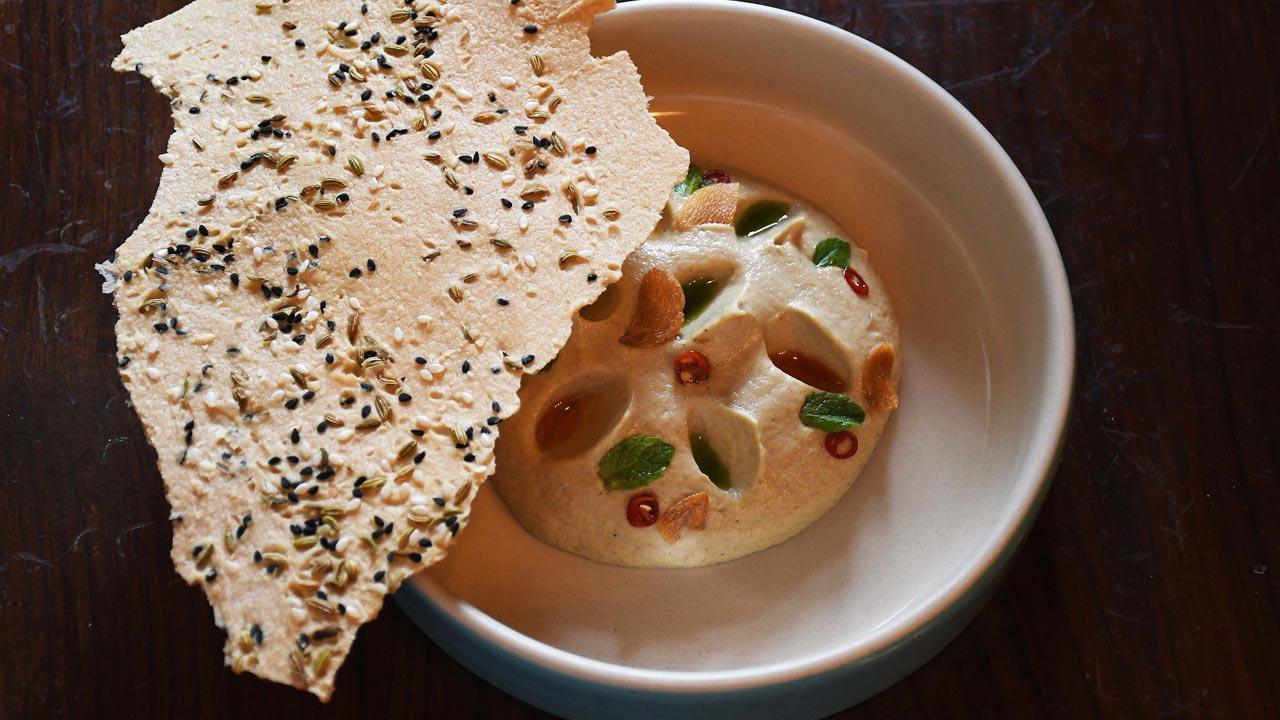 His baigan chokha with sattu papdi, tomato oil and pickled chillies, a technique forward dish inspired by the traditional litti chokha
His baigan chokha with sattu papdi, tomato oil and pickled chillies, a technique forward dish inspired by the traditional litti chokha
Restaurateur Gauri Devidayal, who along with husband Jay Yousef runs The Table, Iktara, Magazine St. Kitchen, says it is time that diners realise that running a restaurant is not a one-man show. “There are misconceptions about what one person brings to an establishment. In the case of a restaurant, it is not like with one person leaving, the team can’t execute anymore, considering that the rest of the team is the same. Of course, there is an aspect of innovation and that can be addressed by finding a fitting replacement and successor for the role,” says Devidayal. The entrepreneur had worked for seven years with Californian chef Alex Sanchez, who helmed The Table ably, and the team ended up winning multiple awards including being ranked #4 Best Restaurant in India by Condé Nast Traveller India (2019).
Some will say, that’s easier said than done. Chef Manu Chandra bid adieu to Olive Bar & Kitchen Pvt Ltd last year after being associated with them for 17 years as chef-partner, overseeing multiple brands, including Toast & Tonic. “It is a big change. Chef Manu used to manage about 35 restaurants across the brand in India,” says Chef Karan Upmanyu, who took over as Sous Chef for Toast & Tonic in October last year. While the work inside the kitchen wasn’t a challenge, it was more about the add on responsibilities that came Chef Upmanyu’s way. “It was initially about finding my own management style. Earlier, I was looking at my department, which is the kitchen, but now, it’s about overseeing the entire restaurant. It is about keeping the teams together, creating new menus for summer, special occasions and working closely with other departments, especially front house to make sure that our vision translates seamlessly through the table.” It’s been six months since Chandra moved on and Upmanyu maintains that the pressure is still there. “Even on my days off, I am thinking about the restaurant.”
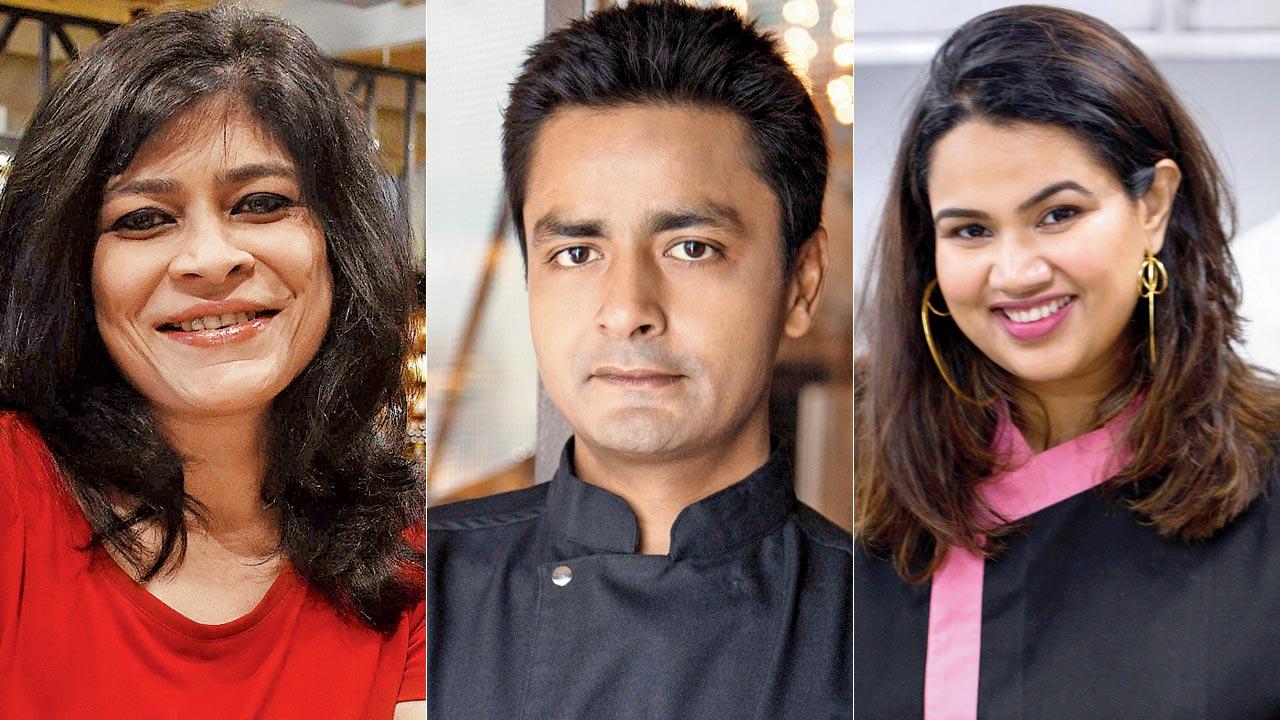 Rushina Munshaw Ghildiyal, Manu Chandra and Pooja Dhingra
Rushina Munshaw Ghildiyal, Manu Chandra and Pooja Dhingra
That Chandra had an easy management style, which included drawing in everybody in the creative process, made things easier. “When he was about to leave, he sat me down and asked me if I was up for the challenge. After that, he shared tips and directions for handling roadblocks. Over the course of the next few weeks, we had multiple and intense meetings with him and AD Singh [owner] to lay the course of direction for the restaurant.”
Calling him possibly the best chef in the country, AD Singh, Managing Director, Olive Bar & Kitchen Pvt Ltd (the holding company for Toast & Tonic), shares, “He gave us two months of heads up, and even after that, he has been available for planning or if I have questions… We aren’t even looking for his replacement as it won’t be possible to replace him. We are currently focusing on providing more exposure to our chefs by taking them to different markets.”
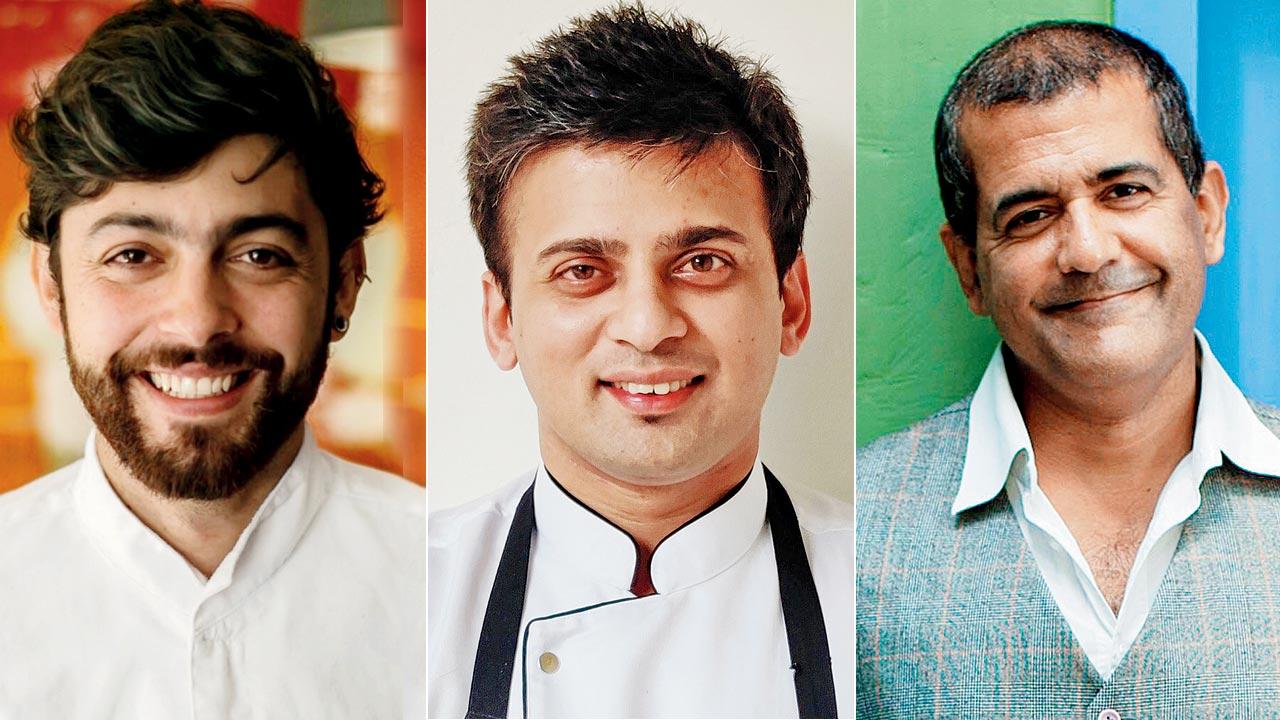 Pablo Naranjo Agular, Karan Upmanyu and AD Singh
Pablo Naranjo Agular, Karan Upmanyu and AD Singh
Finding a successor from the existing team is always easier, agree most restaurateurs. “The good thing with Chef Pablo [Naranjo Agular] leaving [he moved from Mumbai back to Columbia] was that we had enough time to plan his exit. We knew six to eight months in advance that he was leaving. He trained the entire team. His sous chef Tejashvi, who had worked under him for several years, took over. Luckily for us, Le15 Cafe was more a dessert cafe and that’s where my expertise also came in. Our regular guests definitely missed him and were disheartened that he was moving on, but they were also happy to try our new menus,” says Pooja Dhingra, pastry chef and founder of Le15 Patisserie and Le15 Cafe, which the South American chef helmed for three years before his exit in 2019.
Zacharias also recommends that the team and promoters be open to change. Finding a mirror image leader isn’t the best idea. “It is important to understand that you don’t always want the leader to be replaced with someone identical or similar. Sometimes, there is room for the vision to evolve, and the food to change. I think what Chef Hussain has done beautifully is develop his own style of cooking, which is kind of similar to mine and yet very different.”
While in their case, the transition worked out well, sometimes it doesn’t go according to plan. Founded by Chef Rahul Akerkar, the iconic Indigo opened in 1999 at a bungalow on Mandlik Road in Colaba and was credited with introducing European fine-dining to the city. Once Akerkar moved on, it seemed to fall out of favour with regulars who said it was no longer the same. Food writer Raul Dias says, “The Indigo restaurant in Colaba did continue for a couple of years post Rahul’s exit, but it was no longer the Indigo that everybody knew. Rahul has a very strong seafood palette. Post his departure, Indigo became meat dominated, and seafood, which was its speciality, was all but eliminated from the menu.” He thinks The Sassy Spoon faced the same issue. “I saw a huge difference when Chef Irfan Pabaney [who co-owned the restaurant] moved away; the food became more people-pleasing, it was no longer innovative. We saw his signature dishes getting slowly diluted.”
It’s clear what the lesson is then. The person may leave but if the vision sticks, and the successor earnestly works to keep the soul of the restaurant and menu intact, transitions can in fact be easy.
 Subscribe today by clicking the link and stay updated with the latest news!" Click here!
Subscribe today by clicking the link and stay updated with the latest news!" Click here!







